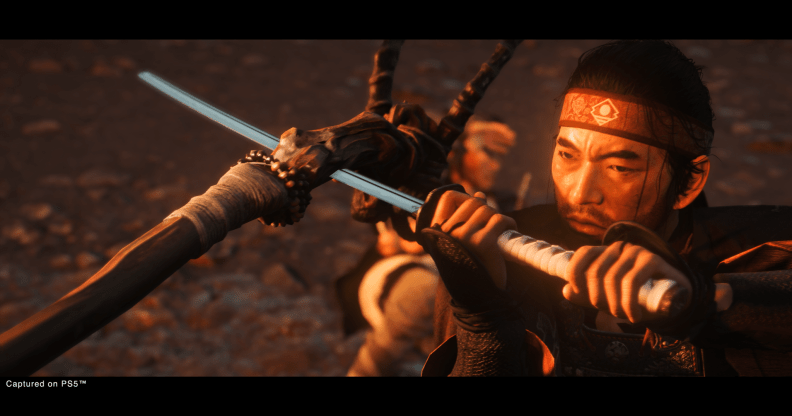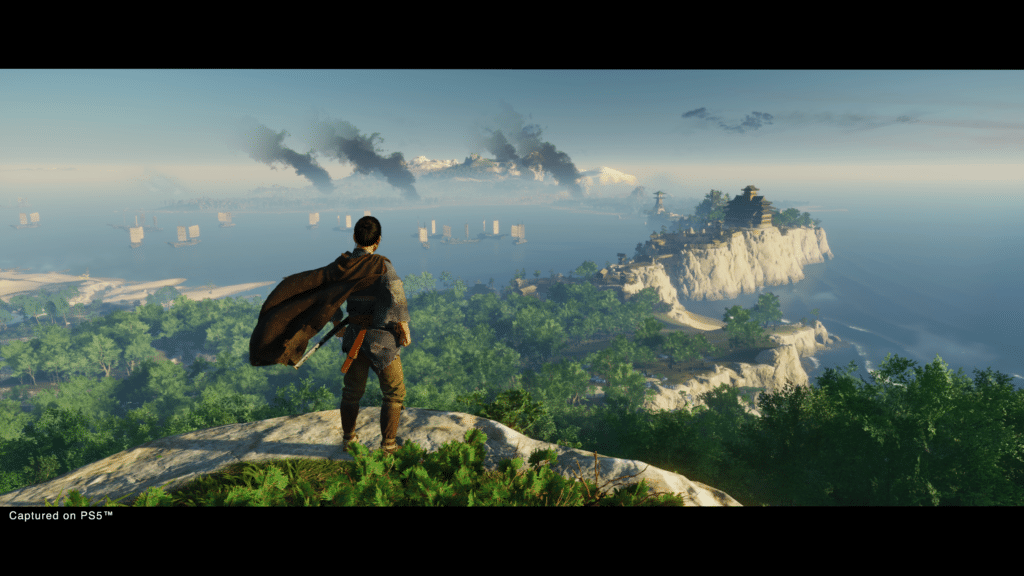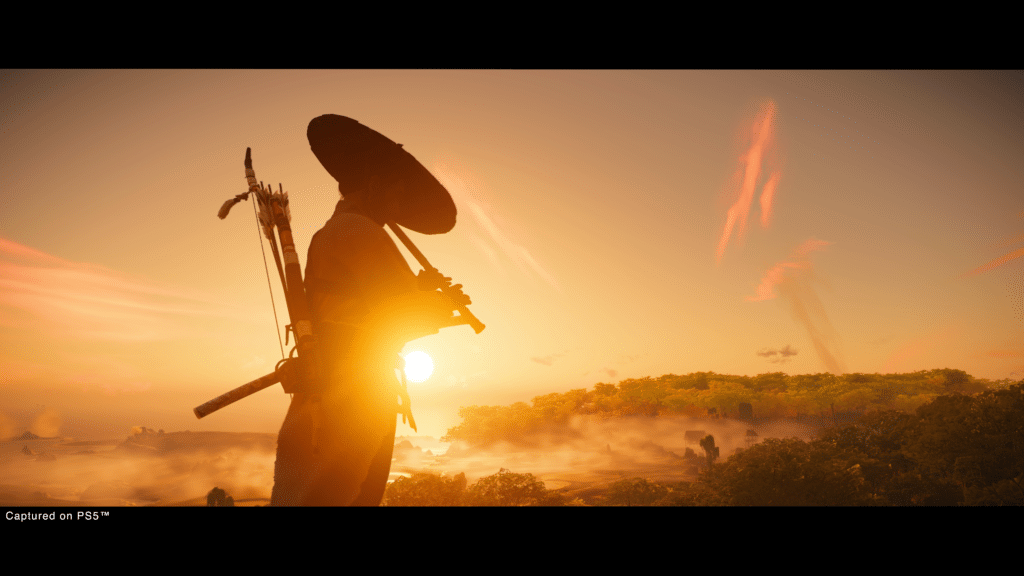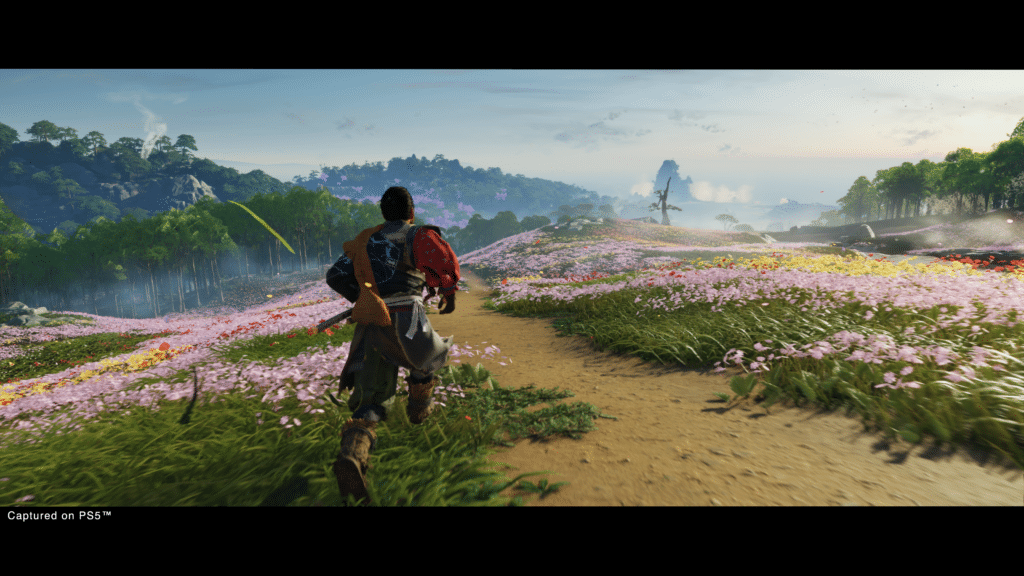Yes, Ghost of Tsushima Director’s Cut is very beautiful, but its gameplay is distinctly last gen

Ghost of Tsushima. (Sucker Punch / Sony)
Ghost of Tsushima. (Sucker Punch / Sony)
A soft breeze rustles the trees, autumnal leaves showering the ground as the ronin and the samurai square off. Their eyes meet, their pupils narrow, and with a flick of a thumb on a katana hilt, the ghost is unleashed.
Ghost of Tsushima was already one of the prettiest PlayStation exclusives on PS4 when it was released last year. Now, a year on, it’s been re-released in Director’s Cut form on PlayStation 5 and remains one of the best looking games in existence.
However polished and next-gen it may seem, though, it still plays like a last-gen title.
An open world samurai epic from American studio Sucker Punch, Ghost of Tsushima is indebted to samurai cinema – specifically Akira Kurosawa. There’s even a Kurosawa mode that turns the graphics black and white.
The character models are gorgeously detailed. Tall grasses sway in the wind; leaves are scattered by the breeze. From day to night, the lighting bathes each glorious vista in pink suns or cold shimmering moonlight.
Ghost of Tsushima is undeniably a beautiful game. But it’s also excessive. In Sucker Punch’s quest for hyper realism, the game feels almost unnaturally beautiful. And where the samurai code is about restraint and appreciating the subtle beauty of the natural world, Ghost of Tsushima feels overblown with its constant wind effects and saturated colours that, through repetition, eventually lose their lustre.

Ghost of Tsushima. (Sucker Punch / Sony)
There’s something oppressive about the visuals too. The camera is too low and close to protagonist Jin Sakurai to pan and appreciate the view; a pervasive fog feels claustrophobic.
What’s more, slapping on a monotone filter does not a Kurosawa mode make. From the editing style to the kabuki theatre expressions, there’s more to samurai cinema than rustling wind. Ghost of Tsushima seems preoccupied with just being really, really, really good looking.
It’s not only inspired by Kurosawa, but a slave to cinema, with overly restrictive gameplay that too often wrestles control away from the player to frame the action just so. Stray too far from your objective and you’ll be forced back on track. And while the game is open world, exploring is clumsy as Jin stumbles over rocks and climbs only over predetermined routes. We are simply actors in a film, not directors of our own story.
A samurai fantasy
What Ghost of Tsushima does provide is an opportunity for players to live out their samurai fantasy. Perform stand-offs against groups of enemies as you battle against the odds. Compose haiku in moments of serenity. Speed across grasslands chased by Mongol invaders. Complete legendary side quests to obtain mythical armour and weapons.

Ghost of Tsushima. (Sucker Punch / Sony)
The plot is stereotypical. Set on the island of Tsushima it follows the real life Mongol invasion in the 13th century, with samurai Jin Sakai torn between the honourable samurai code and cowardly (but effective) assassin abilities to save his people. From start to finish, Jin is a stoic and flat protagonist who never really develops. Thankfully he’s joined by some more interesting characters, from a bisexual clan leader, to an abused thief and a warrior monk.
The plot and the graphics are simply set dressing for what is, deep-down, overly familiar quest design. Follow the tracks. Play detective. Kill all the enemies. Rinse and repeat.
Ghost of Tsushima is a collection of samurai clichés to the point of absurd fetish. Whether it’s an authentic experience or simply pastiche is up to taste.
And yet, despite these flaws, it remains an enjoyable experience. It may follow the typical open world game structure, ticking off quests and falling into repetition, but it’s all delivered at a mind-bogglingly high quality. The graphics are rich, the sound design and music evocative, and the gameplay sells the fantasy that being a samurai is simply…cool.
Much of that is down to combat. Players can choose freely between samurai abilities and assassin (ghost) abilities. The former is where the game excels. Pulling off parries and switching between stances for stylish kills, before unleashing ghost stance that paints the screen a rageful scarlet, is immensely satisfying (even though the lack of lock-on can be awkward). It’s even possible to wipe out an entire settlement in an initial stand-off, sending Mongols and enemy ronin to their doom in a single katana swipe.
By contrast the stealthy ghost abilities are far less interesting – far less samurai – and are undermined by the stiff movement that plagues exploration. Fumbling over a tightrope and poking an enemy instead of slitting their throats doesn’t quite fit with the samurai film aesthetic.

Ghost of Tsushima. (Sucker Punch / Sony)
The Iki Island expansion
Along with smoother frame rates, faster loading, and haptic controller feedback, this Director’s Cut includes the Iki Island expansion. Accessible at any time from the game’s second act (though it’s definitely endgame content), it sees Jin travel to the nearby island that’s overrun by bandits and a fearful shaman known as The Eagle.
Freed from the shackles of the main game’s rigid plot, the storytelling is more creative here. Jin is haunted by painful visions from his past and forced to face his father’s death – and his crimes.
It’s an essential story for fans of the main game and provides extra context to Jin’s character, something that would have been welcome before. It’s all over a little too quickly though.
Players are free to explore Iki Island that feels more lush and colourful than Tsushima proper. It also adds more side quests, more mythic quests and more minigames: including archery challenges, tameable animals and playable Breath of the Wild style memories.
Ultimately, the Director’s Cut crams even more content into an already stuffed game. As a fantasy game, Ghost of Tsushima is fun and stylish and cool, its endlessly repetitive quests offering an almost zen-like experience that demands to be finished.
Yet underneath its aesthetic are old bones and various influences that lack originality. It’s a game that skirts a very fine line between samurai cliché and the ultimate samurai simulator.
3 / 5
Ghost of Tsushima Director’s Cut is available now on PlayStation 5.
For more gaming news, follow Gaymeo on Facebook and Twitter. You can also email us with any news or tips on [email protected]

